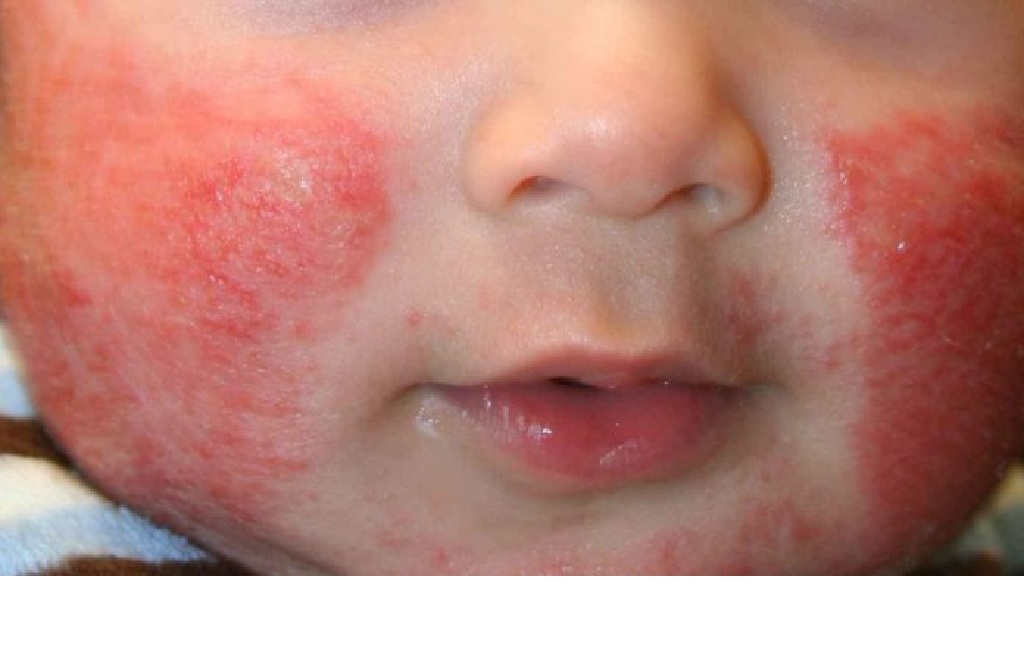8 Ways to Keep Your Kids Safe from Rashes and Eczema
It’s no fun for you or your little one when they are itchy and miserable.
Unfortunately, kids are rash magnets.
And eczema is more common now than when we were children (1).
But your child isn’t doomed. There are simple ways to avoid eczema and rashes.

Let’s look at five things you can do to keep your kids safe.
Step one: check the label for irritants
Before you apply anything to your child’s skin, check the label.
Do you see ingredients like “parfum” or “fragrance?”
Scented products are often the culprit.
Artificial fragrances are one of the most common skin irritants.
This applies to detergent and softener for washing clothing, too.
Avoid the problem by using fragrance-free products. Don’t even settle for “unscented.”
Buy body wash for kids that doesn’t have perfumes. You don’t need this ingredient to get them clean.
Step two: apply moisturizer
Hydrated skin is resistant to irritation.
When you put baby face cream on your infant, she is a lot less likely to end up with chapped cheeks.
Body lotion can keep her from getting swimmer’s itch.
And moisturizer can prevent diaper rash.
Sure, it takes a few extra minutes to put some on, but it saves a lot of trouble and treatment in the future.
Step three: hand-washing
I know how hard it can be to get kids to wash their hands.
But I’m sure you’re aware of how essential it is.
Proper handwashing doesn’t just prevent colds and the flu; it wards off rashes.
You can steer clear of impetigo, hand, foot, and mouth disease, and spreading poison ivy.
Turn it into a game, bribe them, whatever it takes.
Step four: do an extra rinse
A second rinse cycle seems wasteful of water.
But it may be just what you need to put a stop to allergic reactions.
Rinse the clothes, bedding, and towels an extra time.
And when your kid’s in the bath, rinse their skin and hair well.
Don’t let your baby sit in soapy water for long.
You’ll be amazed at how much this helps.
Step five: sunscreen
Get a mineral sunscreen made for kids.
Then slather it on them before they go outdoors.
Mineral sunscreen reflects harmful UV rays. It’s better for children than chemical sunscreen, which absorbs the radiation but can cause irritation.
Remember to reapply according to the directions on the label. Usually, it’s every couple of hours, or after forty minutes in the water.
No sunburn means healthy, not itchy, skin.
Step six: use mild soap
I already mentioned doing a second rinse and avoiding fragrances.
So, what kind of soap am I talking about?
Adult soap is made with sulfates to remove grime and body oil.
Meanwhile, baby bath soap usually avoids sulfates. Sometimes it has coconut-based cleansers instead.
They have plenty of cleaning power for delicate skin.
Also, look for products that are pH-balanced. Harsh alkalis strip moisture.
Step seven: try a bleach bath
Talk to your doctor about giving your child a bleach bath if he or she has eczema.
It sounds harsh, but you’ll be using a small amount of bleach only.
Plus, it’s only for a few minutes (3).
It stops the itching and calms the skin.
Step eight: quarantine
The word “quarantine” has been in the news a lot lately, hasn’t it?
It seems like a big inconvenience, even if it helps limit the spread of disease.
You might need to try a quarantine in your home to avoid rashes.
Obviously, if your child’s favorite playmate is ill with a contagious skin condition, they shouldn’t hang out.
But you might also try temporarily isolating your child from other sources of irritation like pets.
I realize that won’t go over well!
Better yet, ask your doctor to do allergy tests on your kid to discover the source of the problem.
Conclusion
In summary, hand-washing, extra rinsing, moisturizing, sunscreen, and avoiding irritants are key to preventing rashes and eczema.
Stick with these steps for a couple of weeks to see if you notice a difference.
Here’s wishing you and your children the best of health.
Sources:
1. https://www.aad.org/public/diseases/eczema/childhood accessed January 29, 2020
2. https://www.healthychildren.org/English/health-issues/conditions/skin/Pages/Eczema.aspx accessed January 29, 2020
3. https://nationaleczema.org/eczema/children/treatment/ accessed January 29, 2020